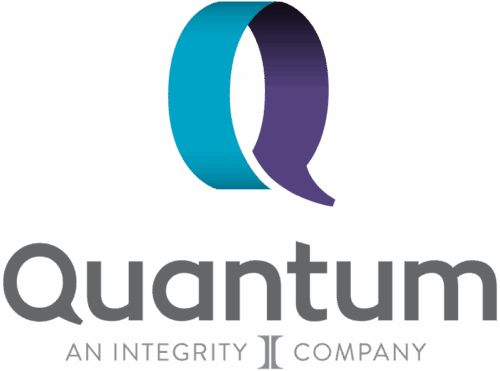As the financial services industry continues to analyze the effects of the One Big Beautiful Bill Act signed into law on July 4, 2025, we wanted to provide you with information from Principal® about how the OBBBA might affect taxes for businesses. You can download their entire flyer here.
We covered some of the changes made for individuals on our blog post, “The Top 10 Tax Changes In the Big Beautiful Bill” last month.
Depending on each client’s unique situation, you may want to help them take steps now to take advantage of certain provisions of the new law. Here are some things to consider.
Business Planning Considerations
Tax rates for owners of passthrough businesses—which are taxed at the individual income tax rate of the owner—were made permanent by the OBBBA. The brackets are 10%, 12%, 22%, 24%, 32%, 35%, and 37%. Long-term capital gains continue to be taxed in brackets at 0%, 10%, 20% (plus 3.8% net investment income tax). The C corporation tax rate was already permanent, and remains a flat 21%.
The 20% qualified business income (QBI) deduction was made permanent. The deduction is for income passed through to most owners of S corporations, partnerships, and sole proprietorships (and limited liability companies taxed as any of these). The deduction is potentially reduced once income exceeds indexed “threshold amounts” (2025: $197,300 single; $394,600 joint filers), and is assuredly reduced for owners of so-called “specified service trades or businesses” (SSTBs), which includes lawyers, accountants, doctors, and many financial professionals. The deduction’s reduction is called a “phase-in” of a limitation, and it had applied completely once income exceeded the threshold by $50,000 for single filers, and $100,000 for joint filers. Under the new law, these phase-in ranges are expanded to be $75,000 over the threshold for single filers, and $150,000 over the threshold for joint filers. This means the full impact of the reduction (meaning no deduction for SSTBs) now hits at incomes of $272,300 (single) and $544,600 (joint).
The exclusion for gain on transfer of Qualified Small Business Stock (QSBS) now has a shorter timeline. Noncorporate acquirers of stock from certain domestic C corporations can sell that stock and avoid income tax on the gain up to certain limits. Before the OBBBA, the stock had to be held for 5 years to enjoy this exclusion. Under the OBBBA, there are now tiered exclusions for stock acquired after July 4, 2025, depending on how long the stock is held:
- at least 3 years: 50% exclusion
- at least 4 years: 70% exclusion
- at least 5 years: 100% exclusion
The excludable gain was limited to the greater of $10 million or 10 times the amount of the investment, but that maximum is now increased to $15 million, and increases with inflation. Also, to use the exclusion, the corporation’s assets had to be no more than $50 million, but now the OBBBA has increased this to $75 million, which also will increase with inflation.
The permanent QBI deduction for owners of pass-through entities and the QSBS gain exclusion for C corporation owners should encourage people to create and carry on closely-held businesses. But these provisions make “choice of entity” questions more interesting.
- Those who hope to start up a business and sell it in a few years might prefer to be a C corporation so they can escape tax on the sale using the QSBS exclusion.
- Those who hope to stay in business for many years, however, might prefer a flow-through structure, so as to potentially have business profits enjoy a 20% deduction each year.
More immediate business deductions in the OBBBA:
Bonus depreciation: For qualified property normally subject to the accelerated cost recovery system under Section 168, the 50% immediate deduction is increased to 100% for certain business property and made permanent.
Accelerated depreciation under Section 179: Effective for property placed in service in taxable years beginning after December 31, 2024, the dollar limitations for currently deducting certain business assets were increased and made permanent. The limits, formerly set at $1 million with a phaseout for costs exceeding $2.5 million, were increased to a new limit of $2.5 million with the phaseout beginning for costs exceeding $4 million; these limits are indexed for inflation.
Depreciation for qualified production property: The OBBBA adds a special depreciation deduction provision for 100% of the adjusted basis of the qualified production property, which may be beneficial for manufacturing and agricultural businesses. The deduction applies to nonresidential real property used by the business as an integral part of a “qualified production activity,” and placed in service in the United States. “Qualified production activity” generally means the manufacturing, production or refining of any tangible personal property, and “production” is limited to agricultural production and chemical production. The original use of the property generally must commence with the taxpayer, and the construction must begin after January 19, 2025 and before January 1, 2029.
Expanded deduction for research and development expenses: The OBBBA added a new deduction for certain domestic research and experimental expenditures by a taxpayer’s trade or business. This provision generally applies after December 31, 2024, but offers the ability to deduct expenses incurred after 2021 in some instances.
Business interest expense deduction increased: Effective for taxable years beginning after December 31, 2024 and before July 4, 2025, business interest expenses are deductible only to the extent of business interest income plus 30% of adjusted taxable income (ATI), plus floor plan financing interest. The new law removes depreciation, amortization and depletion from the calculation of ATI and adds certain trailers and campers to the definition of “motor vehicle” for purposes of the floor plan financing interest provision. These changes may increase the value of the business interest deduction.
More changes to business taxes:
Farms
The OBBBA provides for special treatment of capital gain from the sale or exchange of “qualified farmland property” to “qualified farmers.” The property must be located in the United States, and have been farmed (or leased to a qualified farmer) during “substantially all of the 10-year period preceding the sale.” It must also be subject to a covenant or restriction that requires such use for at least 10 years after the sale or exchange. “Qualified farmer” generally means an individual actively engaged in farming. The new provision allows gain on such a sale or exchange to be reported over four years, instead of in the year of sale or exchange.
Effective for taxable years ending after July 4, 2025, it also provides an exclusion for 25% of the interest on loans secured by rural or agricultural real property received by a qualified lender on any qualified real estate loan. The borrower for this exclusion must be a person other than certain foreign entities, and the loan must be made after July 4, 2025.
Corporate Charitable Contributions
Effective for taxable years beginning after December 31, 2025, charitable contributions by corporations must now exceed 1% of taxable income to be deductible, and the maximum deduction of 10% of taxable income remains. Deductions that are disallowed for either being below the 1% floor or above the 10% ceiling can be carried forward for 5 years.
Executive Compensation at Publicly Traded Companies
Effective for taxable years beginning after December 31, 2025, the $1 million limit on deductible compensation for executives of publicly traded companies has been expanded to include remuneration from controlled group members.
Child Care and Family & Medical Leave
Effective for amounts paid or incurred after December 31, 2025, the OBBBA enhances the credit permitted to employers that pay for child care by increasing the amount of qualified child care expenses taken into account from 25% to 40%. The maximum amount of the credit increases from $150,000 to $500,000 ($600,000 for eligible small businesses) and will be adjusted for inflation.
Effective for taxable years beginning after December 31, 2025, OBBBA makes permanent and enhances the family and medical leave credit to employers who pay wages to employees on family and medical leave (or the employer can take a credit for a portion of premiums paid for a policy that pays for such leave).
Student Aid & Loans
Effective July 1, 2026, the OBBBA included a number of provisions affecting student aid and the repayment of student loans. Business owners might be particularly interested in a provision governing which family assets will be excluded from the determination of aid. Formerly, an exclusion was provided for the net value of the family’s primary place of residence. An amendment expands this exclusion to include the value of a family farm on which the family resides, a small business with less than 100 full time employees to the extent it is controlled by the family, and certain family-owned commercial fishing businesses.
1099 Form Thresholds
Effective for payments made after December 31, 2025, the reporting and backup withholding thresholds are increased from $600 to $2,000 for payments which must be reported on a Form 1099, which will increase with inflation. This increase will make some paperwork easier for many businesses, but other provisions like the temporary no tax on tips and the temporary no tax on overtime pay might cause a headache for employers and those who run their payroll systems.
Nonprofit Compensation
Effective for taxable years beginning after December 31, 2025, the 21% excise tax imposed on executives earning in excess of $1 million annually is expanded to include any current or former employee who received or receives compensation after December 31, 2017 in excess of $1 million, not limited to the top five, including employees of a predecessor organization. This could impact nonprofits who have established split dollar loan arrangements and other compensation packages to offset income taxes.
If you would like to explore advanced planning strategies for estate planning for your clients—including clients who have future plans to sell a business or farm, or leave it to family members—call us at 800.440.1088. We would love to help you find tax-advantaged solutions, potentially using a combination of trust/s and life insurance.
Original source: Principal®
Additional source: https://smartasset.com/estate-planning/gift-tax-explained-2021-exemption-and-rates
As a CERTIFIED FINANCIAL PLANNER™, former advisor and portfolio manager for one of the nation’s largest wirehouses, Andy understands what it is like to sit across from a client during good times, but more importantly, during bad times when markets are down.



